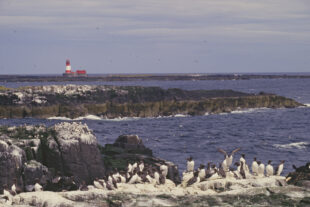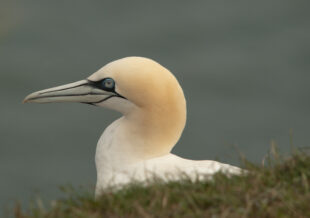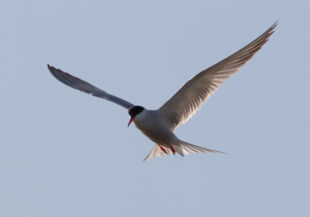
By Ginny Swaile, Deputy Director Science - Sustainable land and sea use
The UK is currently experiencing the largest outbreak of highly pathogenic avian influenza on record with poultry, captive birds and wild birds all affected. A similar situation is happening across continental Europe and North America.
Avian influenza is a seasonally occurring virus and normally, infections are reported between autumn and spring and then virtually disappear over the warmer summer months. It typically affects waterfowl such as ducks and geese as they gather in large flocks over winter before migrating to their summer breeding grounds. This year the strain of virus is more infectious. Large mortalities of geese were reported in the Solway this winter with around 10,000 deaths suspected (25% of the overwintering population).
Due to the changes, infections have continued beyond the normal winter period and now are affecting breeding colonies of seabirds which are not normally affected such as: great skuas, roseate, common sandwich and arctic terns, guillemots, black-headed gulls and gannets. The scale of mortality is unprecedented with significant losses of adult birds and even larger mortality of chicks being reported.

The UK is host to globally significant numbers of seabirds and waterfowl, many of which are amber or red status on UK Birds of Conservation Concern and so these impacts represent population level effects and even potential local extinction risks and there is little sign of it abating. There has been a lot of media attention, with particular attention on the Farne and Coquet Islands in Northumberland and more recently Scolt Head in Norfolk as the pictures of dying birds and carcass collections have been shared and the grim reality of the situation sets in.
Natural England is advising Defra, working with other agencies and environmental Non-Governmental Organisations such as the British Trust for Ornithology to monitor the situation, assess the risks, provide operational guidance and manage public access where necessary. Our ornithologists and wildlife disease specialists meet weekly with Defra and partners and our local staff are continuously monitoring the situation on the ground.
We have a number of National Nature Reserves (NNR) that have been affected and on those sites our people are monitoring the birds and sadly also have the difficult and distressing task of collecting carcasses in those circumstances where it is hoped this will reduce the spread of the disease. All access to colonies is being assessed on a case by case basis. Other organisations that manage breeding colony sites, such as the RSPB and National Trust, are doing the same. Our approach to tackling this year’s bird flu outbreak continues to be led by international best practice and the latest evidence.

Senior Reserve Manager Andrew Craggs reports:
“The Lindisfarne NNR team first recorded multiple sea bird deaths in early June with gannets being the most commonly recorded species. To date hundreds of birds have been recorded along the 65 kilometres of coastline in the NNR, many of which have been removed for safe disposal. Thankfully, to date, no signs of avian influenza have been observed within the very rare Little Tern colonies.”
Summer Reserve Warden and County Bird Recorder Neil Lawton describes the situation at Scolt Head National Nature Reserve:
“The biggest impact has been on the Sandwich Terns, a total 805 dead adults have been collected and removed, with a further 200 birds collected elsewhere along the coast, resulting in 10-15% of the North Norfolk population of adult Sandwich Terns believed to have died. The actual number of dead birds could be significantly higher with many believed to have died at sea. Mortality amongst chicks has been huge, with around 80-85% of all chicks dying and several thousand (around 500kg), mostly terns, removed from the site.”
At some sites where people can normally come into close contact with the birds, public access is being restricted to help reduce the risk of spreading the virus and to protect the birds from disturbance which is an added pressure whilst they are so vulnerable. We are asking visitors to be aware of the risks and behave sensitively; information is being displayed on individual sites. The public are encouraged to report findings of dead wild birds to the Defra helpline on 03459 335577. Defra has published a separate blog around carcass collection.
So many affected species are of conservation concern that it is clear that understanding the impacts of avian influenza and other existing pressures on seabirds and waterfowl in the long term is critical to supporting their recovery as well as maintaining and protecting resilient populations in the future.
We have been commissioned by Defra to assess the vulnerability of seabird species in light of the pressures they are facing, and to propose recommendations to address them. We are working with a range of partners to do this and hope to be able to report on the impact in more detail in the autumn when we will have the breeding data compiled and a clearer picture. With no sign of the virus going away, we are also working on contingency plans for a sustained outbreak.